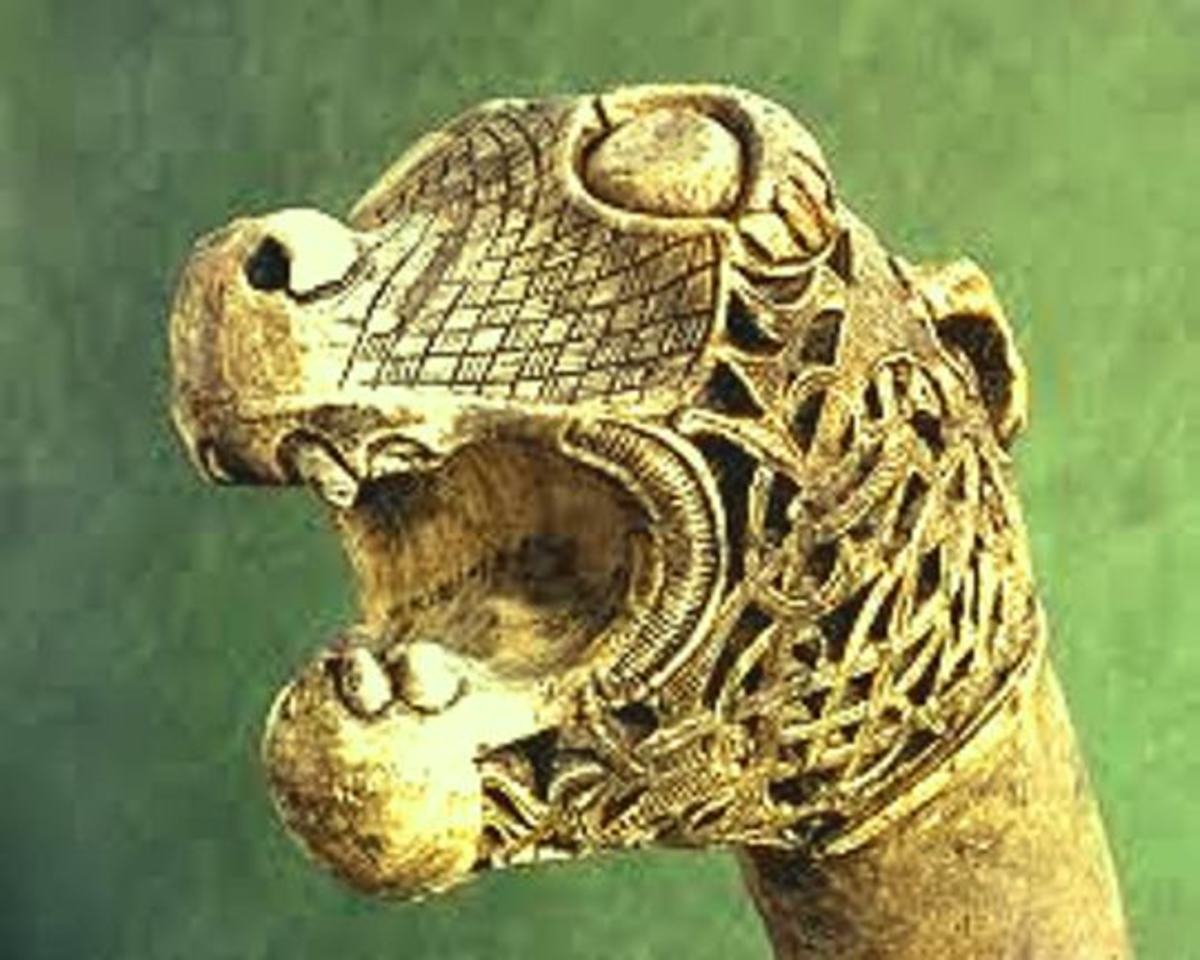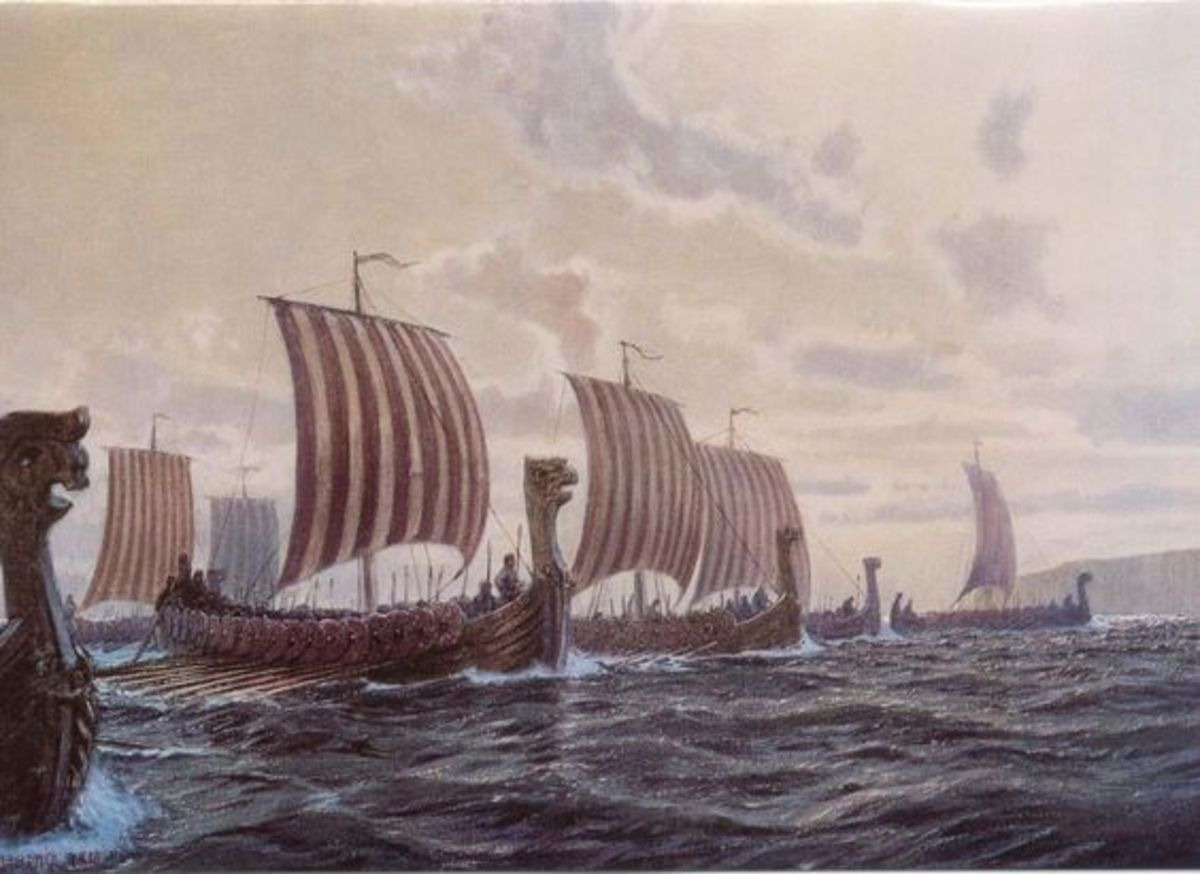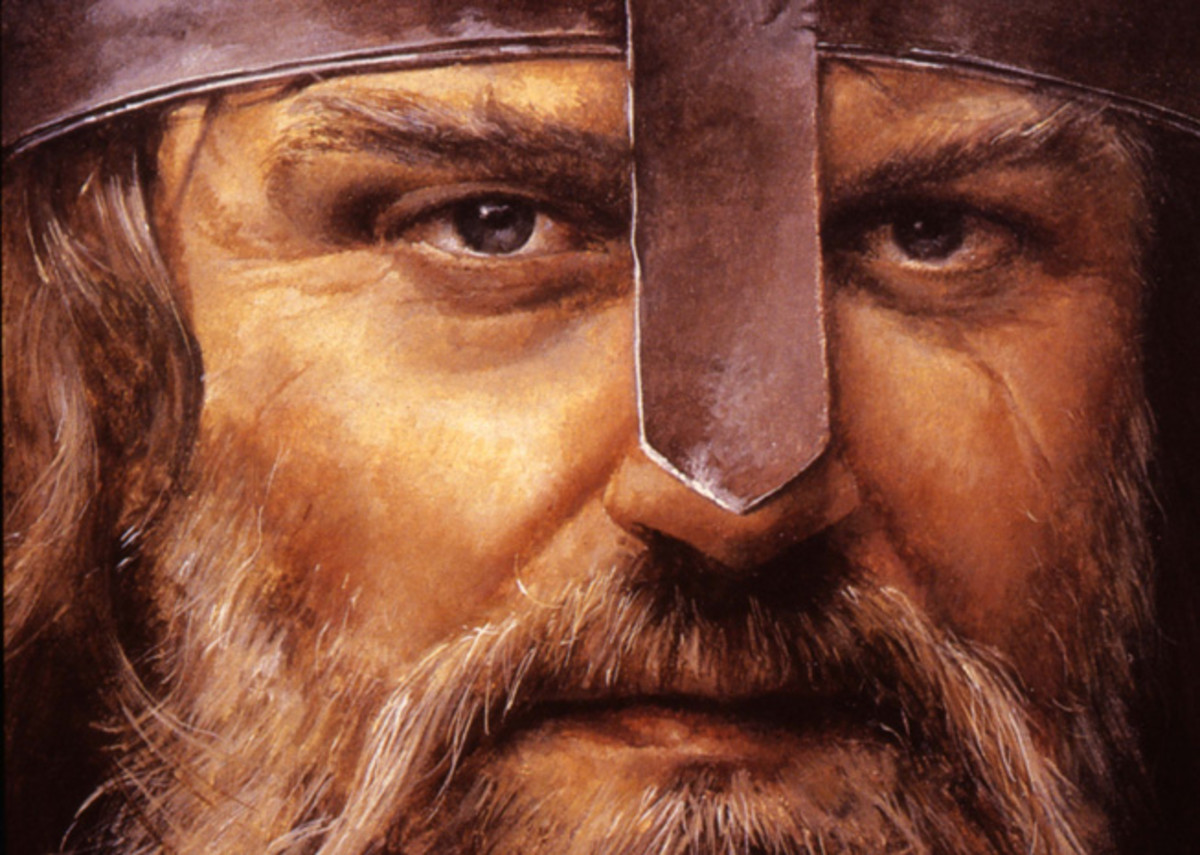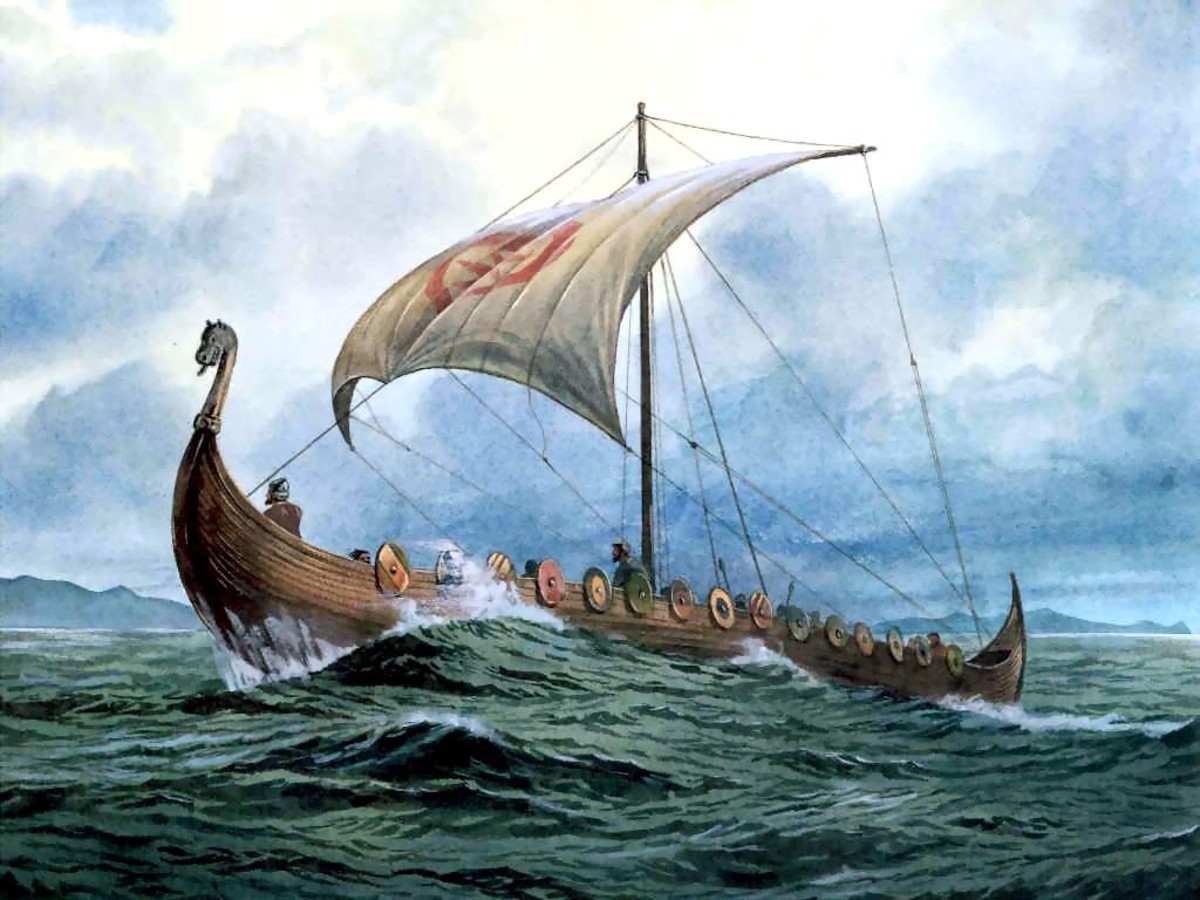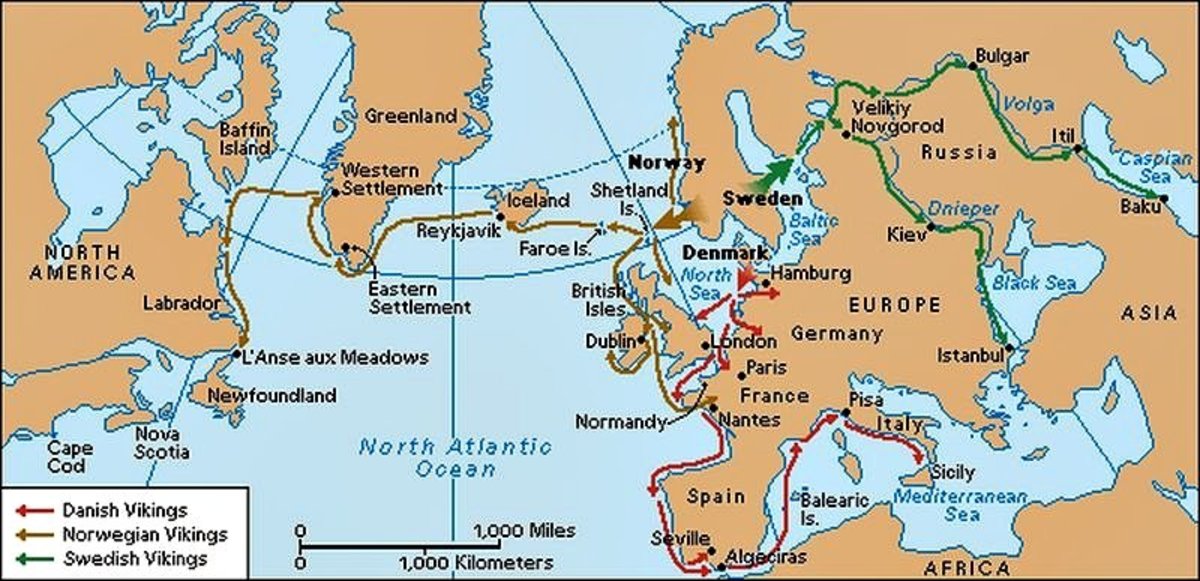- HubPages»
- Education and Science»
- History & Archaeology»
- History of Europe
Viking Longship Construction and Design
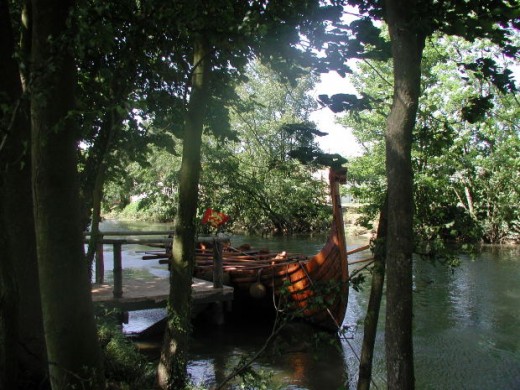
Introduction
The Viking longship was of superb design, but it was not always so. Their ships did not become that way over night, and it took until the 9th century for the Viking culture to finally develop a design that provided the perfect vehicles for voyage over water.
Viking Longship Construction
Viking longships went through a number of developmental changes and innovations that resulted in superior technological advantages in their design. Some of the most remarkable of these vicissitudes of ship construction included the keel, rudder, oars, and sail.
Keel
- One of the initial changes in ship construction was creation of the keel and the ability to remove the rudder. The keel made the ship strong and allowed it to transverse the rough seas and the rigors of the open ocean.
Rudder
- Most of the early boats of Europe were rudderless and utilized a long steering oar. The Vikings invented the use of a rudder to steer the boat and this rudder could be removed as needed.
Oars
- Another major problem that the Vikings overcame was the size of the oars: too short and they would not work, but if they were too long they would not be able to be managed. The oars provided the ability for the ship to continue its journey during calm seas or when traveling through waters that were less conducive to the use of a sail such as coastal waterways, fjords, and rivers.
Sail
- Perhaps the largest change that the Vikings made to the their ship construction was the addition of a sail. The Christians attempted to copy the Viking ship design, but it was not successful. King Alfred was one of the men who tried to copy the Viking ship design, but failed. The sail allowed the ship to travel swiftly and was less physically demanding on the occupants of the ship who needed to rely less than the use of oars during long journeys.
Types of Viking Ship Designs
There was more than one design of Viking ship, and each design was better suited to a particular task or function. There was a ship design for trade, another for raiding, and yet another which was used to cross over deep seas. These designs allowed for variances in the amount of men that each ship could transport and the amount of goods that it could carry. The ships were balanced by oars which had to be manned by men.
Medieval Naval Supremacy
During the early Medieval period, the Vikings were recognized for their advanced naval technology. Their technological supremacy provided the Vikings with the ability to dominate other cultures of the same chronological period. This provided the Vikings with the ability to raid the towns on the continental coast, travel inland for the purpose of trading with other cities, or even journeying across distant seas to far away lands. Even today, the Vikings are still largely remembered by their ships.
© 2015 Midnight Muse

